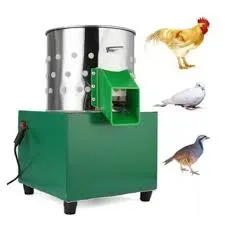Innovative Feeding Solutions for Poultry Cages to Enhance Farm Productivity
Oct . 19, 2024 08:31 Back to list
Innovative Feeding Solutions for Poultry Cages to Enhance Farm Productivity
The Importance of Poultry Cage Feeders in Modern Poultry Farming
Poultry farming has evolved significantly over the years, and with this evolution, the methods and tools used in the industry have also undergone transformations. One such essential tool that has emerged as a cornerstone of modern poultry farming is the poultry cage feeder. As farmers strive for efficiency, sustainability, and animal welfare, understanding the significance and functionality of poultry cage feeders becomes critical.
Poultry cage feeders are designed to provide a consistent and adequate supply of feed to chickens, ducks, and other poultry species housed in cages. These feeders come in various designs, ranging from simple troughs to sophisticated automated systems that can dispense feed at predetermined intervals. The primary goal of these feeders is to minimize waste and ensure that every bird has access to the necessary nutrients for optimal growth and egg production.
One of the significant advantages of using cage feeders is the reduction of feed waste. In traditional feeding systems, particularly those using open troughs or scattered feed, a considerable amount of feed can be wasted due to spillage or contamination. Poultry cage feeders are designed to minimize this waste by allowing birds to access feed directly while keeping it protected from dirt and moisture. This not only maximizes feed efficiency but also helps in maintaining a cleaner environment within the poultry house.
Moreover, poultry cage feeders play a crucial role in promoting better feeding habits among poultry. With feed readily available in a controlled environment, birds are less inclined to engage in competitive behavior over food. This can lead to more uniform growth rates and healthier flocks. The adjustability of many modern feeders allows farmers to tailor the feed distribution according to the specific needs of their birds, thus enhancing their overall well-being.
poultry cage feeders

Automated poultry cage feeders have revolutionized the industry further. These systems can be programmed to dispense precise amounts of feed at specific times, ensuring that birds are fed consistently and at regular intervals. This automation not only reduces labor costs for farmers but also allows for more accurate monitoring of feed consumption. By analyzing this data, farmers can make informed decisions about their feeding strategies, leading to improved feed conversion ratios and overall flock performance.
In addition to efficiency and convenience, poultry cage feeders also significantly contribute to the welfare of the birds. Ensuring that every bird has access to food reduces stress levels among the flock, which can be particularly important in intensive farming systems. Healthy birds are more likely to produce higher quantities of eggs or meat, which directly benefits the farmer's bottom line.
Moreover, the design of poultry cage feeders can also influence the health of the birds. Features such as adjustable height and proper spacing between feed access points can accommodate different sizes and breeds of poultry, ensuring that no bird is left out. Additionally, many feeders are made of materials that resist corrosion and are easy to clean, helping to prevent the buildup of pathogens that can lead to disease outbreaks.
In summary, poultry cage feeders are not merely a feeding solution; they are an essential component of efficient and humane poultry farming. By reducing feed waste, promoting better feeding habits, and enhancing bird welfare, these feeders contribute significantly to the productivity and sustainability of poultry operations. As the industry continues to innovate, the role of poultry cage feeders will only become more important, paving the way for a more efficient and responsible approach to poultry farming in the future.
-
Automatic Feeding Line System-Pan Feeder Nipple Drinker|Anping County Yize Metal Products Co., Ltd.
NewsJul.29,2025
-
Hot Sale 24 & 18 Door Rabbit Cages - Premium Breeding Solutions
NewsJul.25,2025
-
Automatic Feeding Line System Pan Feeder Nipple Drinker - Anping County Yize Metal Products Co., Ltd.
NewsJul.21,2025
-
Automatic Feeding Line System Pan Feeder Nipple Drinker - Anping County Yize Metal Products Co., Ltd.
NewsJul.21,2025
-
Automatic Feeding Line System - Anping Yize | Precision & Nipple
NewsJul.21,2025
-
Automatic Feeding Line System - Anping Yize | Precision & Nipple
NewsJul.21,2025






